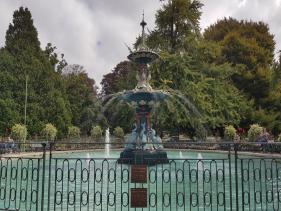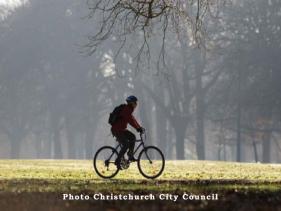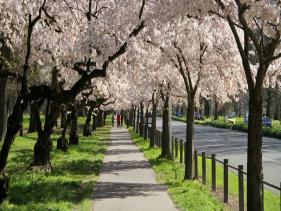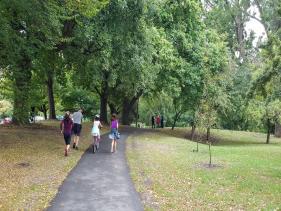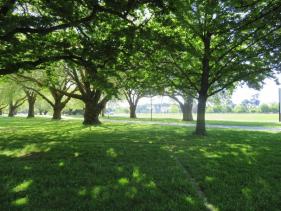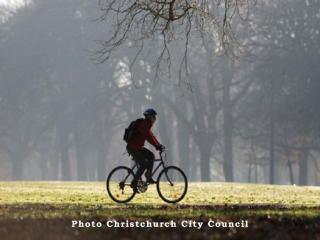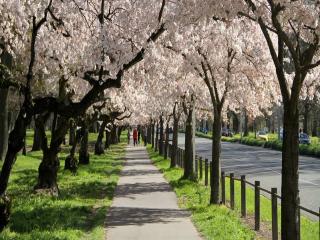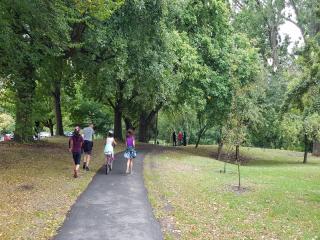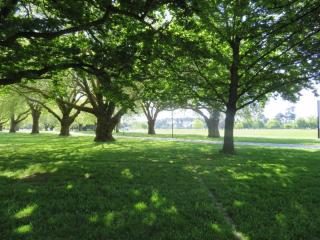Christchurch Hagley Park
Hagley Park has been at the heart of Christchurch since the 1850s when it was set aside for the enjoyment of Christchurch residents.
Our Park was named after Hagley Park, the country estate of Lord Lyttelton, who became chairman of the Canterbury Association in March 1850.
Today, it is the most significant central city park, offering a diverse range of entertainment and recreational facilities close to the city centre.
Hagley Park is renowned for its extensive area of 165 hectares (407 acres), its wide-open spaces and mature woodlands. It comprises North and South Hagley Park which are separated by Riccarton Avenue and bordered by Deans, Hagley, Rolleston and Harper Avenues.
It includes a golf course (Hagley Golf Course), Botanic Gardens, Grass and hard surface Tennis Courts, Netball Courts, Petanque Club, Croquet Club, Model Yacht Club, and the Hagley Cricket Oval.
Hagley Park is characterised by its trees and broad open spaces, although photo opportunities in the park are all year around it is worth mentioning that in spring the cherry blossoms bordering both sides of the walkway along Harper Ave are spectacular.
Walking and Running is very popular in the park. A perimeter pathway of both North Hagley Park and South Hagley is around 8.5 km.
There is plenty of space along the tree lined avenues for walking and cycling, people enjoy cycling in the park and it is easy terrain..
At all times of the day you find people out and about enjoying this great asset of the city.
History of the Park

Col. R A Chaffey, officer commanding Canterbury District, reviews military parade, Hagley Park, Christchurch
25 Apr. 1918
In 1855 when the new Provincial Government took over the role of the Canterbury Association, a law was passed which said that the land commonly known as Hagley Park, shall be reserved for ever as a public park, and shall be open for the recreation and enjoyment of the public.
In the 1850s, the land for Hagley Park was a mixture of scrub and swamp, with creeks feeding to Otakaro river (Avon).
On 9 July 1863 the first tree was planted in the Government Domain (Botanic Gardens). It was known as the Albert Edward oak and was planted to mark the wedding of the Prince of Wales, later King Edward VII, to Princess Alexandra of Denmark, which had taken place on 10 March 1863.
The first recorded tree plantings in Hagley Park were the avenue of Oriental plane trees in the North Park in 1870. Pines were also planted in 1870 in the northeast corner of the Park, and near the swamp, which later became Victoria Lake.
From 1870-72 the tree nursery produced 763,034 trees, which were distributed throughout Canterbury, including the thousands of oaks planted by the Railway Department along the south line.
The South Park was used for the Great Industrial Exhibition in 1882.
Victoria Lake was formed in North Hagley Park in 1897 to celebrate the Diamond Jubilee of Queen Victoria’s reign it was stocked with perch and became a favourite spot for sailing model yachts.
116 acres of North Hagley Park was fenced off for the New Zealand International Exhibition in 1906-07. Special buildings were constructed just for the Exhibition, including a Māori pa built next to Lake Victoria. 37,000 people attended the opening of the Exhibition.
The tradition of using North Hagley for public amusements has continued with use by visiting circuses and open-air concerts.
Source: Christchurch city libraries






